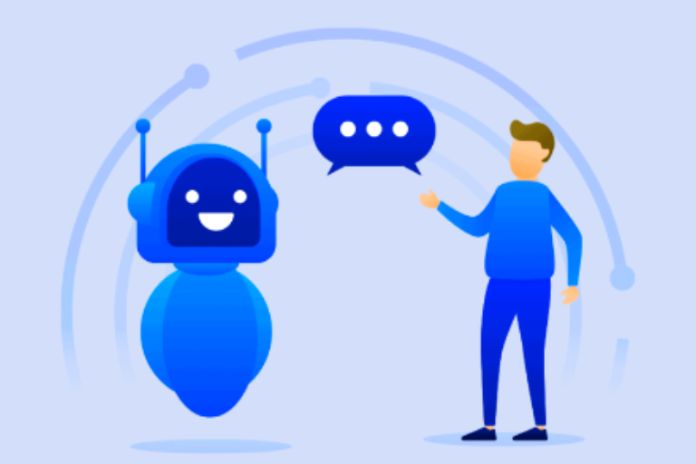Taking advantage of all the benefits of introducing a chatbot in your company’s service depends on a few factors; among them, learning how to train a chatbot is one of the most demanding of your attention.
Ensuring that the chatbot has been supplied with the right content and has been well trained will save the team time with crashes, errors, and the need to “fix” the previous work.
Furthermore, only through practical training will the bot be able to perform quality automated service, contributing to the quality of the customer experience.
The first step of how to train a chatbot is to select the chatbot questions and answers, or rather, the questions and answers that will be inserted into the chatbot.
However, Machine Learning technology is a powerful weapon in training a chatbot. This technology is responsible for making the bot learn from mistakes and successes and automatically evolve with each interaction. Want to understand how this system works? Then check out the video below to expand your knowledge of machine learning.
Why Train A Chatbot?
Chatbots are automated communication and service systems that work from messaging software like WhatsApp or the chat on your website. They can respond to customers’ messages autonomously without needing a human attendant’s support.
Generally, it is a type of robot that responds to messages that customers and users send to your company’s communication channels. Chatbots with artificial intelligence make this conversation between machine and user much more natural and fluid, offering a much better experience for those who interact with the bot.
Artificial intelligence allows the chatbot to analyze the customer’s message, as a human agent would, search for the best answer, make decisions and offer the ideal return. All this is from a technology known as NLP or Natural Language Processing.
Brilliant service depends on the bot understanding what the user is saying through voice or text messages. It also depends on the ability to assess the best response to each person’s specific demand.
Note that this is very similar to the human cognitive process, hence the name “artificial intelligence.” And following this logic of similarity with the functioning of human “intelligence,” it is natural that everything starts and improves from learning. Don’t you think?
That’s why it’s essential to understand how to train a chatbot. It is from learning that a chatbot can understand what your customer is asking for and what is the best option to offer. As with human service professionals, the more a bot learns and interacts with people, the better, faster, and more efficient its responses will be.
In this sense, chatbots for companies also include machine learning technologies, a technology that allows machine learning from their experiences. In general, this means that with each user interaction, your company’s chatbot will learn more about providing better service.
How To Train A Chatbot: 5 Steps
Teaching the company’s chatbot to offer quality automated service to customers involves providing the correct information related to the functionalities that this system will perform.
In practice, you can learn how to train a chatbot by following five tips:
- Start training before putting the bot on the air,
- Understand the main demands of customers,
- Practice dialogues,
- Track the bot continuously,
- Consider hybrid fulfillment.
- Start training before putting the bot online.
Just as you would with a human collaborator, you should prepare the bot before putting it on the front line of service. To do this, use the history of calls your previous (human) attendants made. Enter the relevant information and content related to:
- bot functionality,
- your enterprise,
- the questions that may come to him.
Insert questions and answers for the chatbot to have a database on which to respond according to user demand.
Understand The Main Demands Of Customers
Since you will need to enter questions and answers for the chatbot to understand what to answer for each contact, you must make the correct selection of those contents that will be introduced into the bot.
For this, it is necessary to define some questions:
- understand what the bot is for,
- what are the central questions of your customers,
- what are the best answers
- what questions to ask to understand the user’s problem better, and more.
This step of training a chatbot is essential to supply it with relevant content so that it can have all the information it needs to understand customer requests.
Practice Dialogues
Having the content in a database does not guarantee that the bot will be able to provide quality services. If we’re saying he needs the training to evaluate user messages better and make decisions, he must start doing that as soon as possible.
As we said above, based on machine learning technology, the chatbot will evolve from the interactions it performs. Therefore, a central part of how to train a chatbot is to perform these interactions. In the chatbot training phase, it is essential to insert content and train dialogues.
Track The Bot Continuously
After launching the boot, it is essential to constantly assess the bot’s level of understanding, assess customer satisfaction, analyze conversations and check the quality of the dialogue (whether or not it was natural). Adjustments may be necessary, particularly at the beginning, so keep a tight rein on the tool launch phase.
Consider Hybrid Service
This tip is not strictly related to how to train a chatbot but how to make the customer experience even more exceptional. A bot, especially at the beginning of execution, may not find all the answers for customers. So, forward the customer to a human agent if the bot can’t find the answer or doesn’t understand the customer.
Make it very simple for the customer. Please don’t make it necessary to change channels to talk to the operator. Your human attendant only needs to take over the responses through the same track.
Also Read: Understand How Google Cloud Search Works












